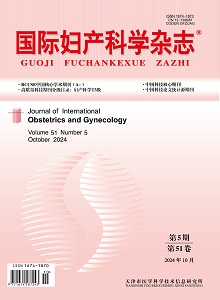Objective: To investigate the clinical efficacy and safety of a novel temperature-controlled radiofrequency (TCRF) treatment for postpartum vaginal laxity. Methods: A total of 43 female patients with postpartum vaginal laxity, treated at Beijing Tsinghua Changgung Hospital, affiliated with Tsinghua University from June 2022 to June 2023, were selected for this study. The patients were randomly divided into two groups: the experimental group (21 patients) received the novel TCRF treatment, while the control group (22 patients) received a sham treatment (no temperature or energy applied). Clinical efficacy and safety were comprehensively evaluated by comparing subjective scores from the female sexual function index (FSFI), female sexual distress scale-revised (FSDS-R), vaginal laxity questionnaire (VLQ), and sexual satisfaction questionnaire (SSQ) before and after treatment, alongside objective assessments of labia minora basal length, vulvar pigmentation, and elasticity. Results: At the 18th week after the first treatment, the mean change in total FSFI score (△T) in the experimental group was 8.72±3.94 points, while in the control group (△C), it was -0.03±1.28 points. The mean difference in FSFI score change between the two groups (△T-△C) was 8.75 points, with a 95%CI of 6.889-10.613 points, indicating that the lower limit of the 95%CI for the difference between the two groups was greater than 0. The experimental group showed a significant improvement in FSFI scores compared to the control group (t=4.810, P<0.001). Two-factor repeated measures ANOVA demonstrated that the main effects of time (Ftime=24.156, Ptime>0.001), group (Fgroup=12.754, Pgroup=0.001), and the interaction between time and group (Ftime×group= 25.689, Ptime×group>0.001) was statistically significant. Intervention effects, with group as the independent variable, indicated that FSFI scores in the experimental group were significantly higher than those in the control group at 6, 10, and 18 weeks post-treatment (all P<0.05). Time effect analysis, with time as the independent variable, showed that FSFI scores at all post-treatment time points were significantly higher than baseline, with scores at 6, 10, and 18 weeks significantly higher than those at 3 weeks (all P<0.05); however, no significant differences were found between FSFI scores at 6, 10, and 18 weeks post-treatment (all P>0.05). At 10 and 18 weeks post-treatment, FSDS-R scores and labia minora base length in the experimental group were significantly lower, and SSQ scores were significantly higher, than those in the control group (all P<0.05). At 3, 6, 10, and 18 weeks post-treatment, the experimental group showed significantly better VLQ scores, digital assessment of vaginal laxity improvement, and vulvar condition compared to the control group (all P<0.05). No adverse events related to the experimental device were reported in any enrolled patients. Conclusions: The novel TCRF technology effectively improves vaginal laxity and enhances sexual satisfaction, with a high safety profile, making it a promising option for clinical application.

